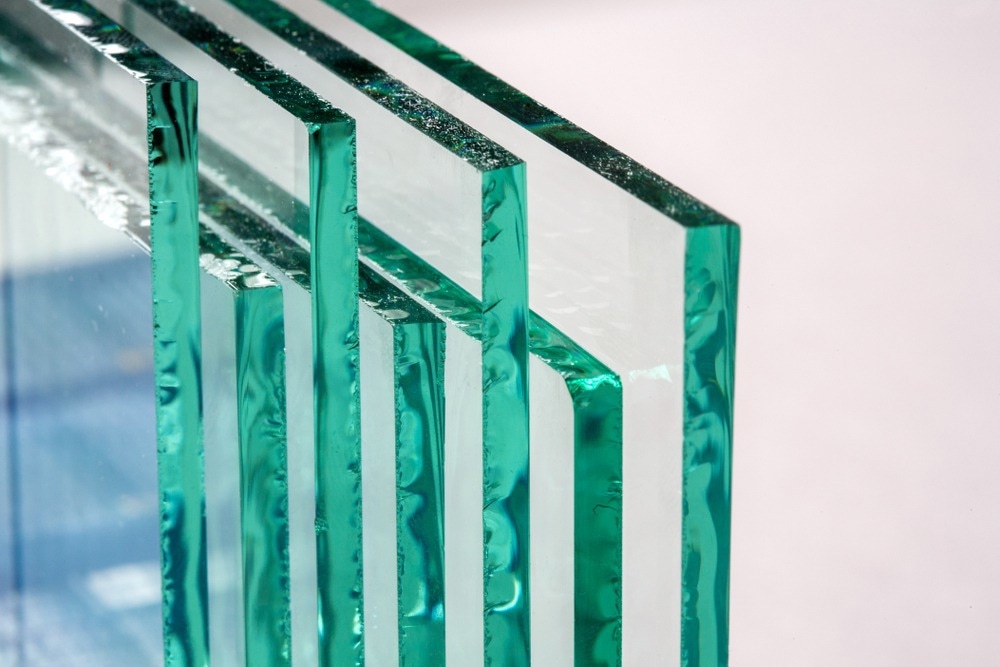A pre-proof paper from the journal Optik studies luminance, optical and physical properties of Pr: NaAlGdP glass under various Pr2O3 concentrations. The appropriate chemical composition of developed glass was determined for its potential in photonics applications.

Study: Tuneable luminescence of Pr3+-doped sodium aluminium gadolinium phosphate glass for photonics applications. Image Credit: sichkarenko.com/Shutterstock.com
Why is Phosphate Glass Important?
Different spectroscopic methods have been used to characterize phosphate-based glasses' optical characteristics and crystalline structure. Because of their distinctive features, glasses have been identified as a possible material for biomedical and biomaterial photonics applications. They have strong potential in tissue engineering because of their bioactivity and biocompatibility.
The effect of rare-earth ions on the glass network has become an essential topic in glass science. Recently, glasses doped with rare earth oxides have received enormous attention due to their peculiar properties in different technological applications such as optical communication field, solid-state lasers such as mid-IR fiber lasers, and frequency converters.
Phosphate glass doped with rare-earth ion (RE3+) has excellent luminescence qualities with the potential for use in various photonics devices such as solid-state lasers, LEDs, displays, and radiation detectors.
Phosphate glass has an isotropic refractive index, low propagation losses, good optical transparency, and an easy manufacturing method.
However, the drawback of phosphate glass is its lack of chemical resistance, which has been mitigated by adding alkaline and alkali earth metal oxides.
Incorporating aluminum oxide into the structure of sodium phosphate glass strengthens the cross-links between PO4 tetrahedra, boosts the durability of the glass, and reduces its thermal expansion coefficient. These enhancements make phosphate glass more compatible with optical device applications.
RE cations are often employed primarily as a modifier for glasses networks. However, these materials' physical, luminescence and optical properties must be researched to determine their true potential in photonic applications.
How Was the New Glass Material Prepared?
The melt quenching technique was utilized in this study to prepare Pr: NaAlGdP glasses with various concentrations.
The raw materials P2O3, P2O5, Gd2O3, Al2O3, and Na2O were first mixed homogenously and then melted at 1200 oC in an electric furnace.
The melt was then poured on preheated graphite mold at 500 oC for three hours for annealing purposes to relieve internal stress, and the glasses were then left to cool down to room temperature. The glasses were prepared using chemical equation 20Na2O + 10Al2O3 + 10Gd2O3 + (60-x) P2O5 + xPr2O3 (x = 0.00, 0.05, 0.10, 0.50, 1.00, and 3.00 mol %) and their samples were labeled on the basis of several P2O3 concentrations for referencing. This is how various samples with different concentrations of P2O3 were prepared. Several methods were implied for investigating the properties of sample glasses.
Methods Used for Investigating Several Properties of Sample Glasses
Sample glasses of 0.3 cm thickness were cut and polished for spectroscopic measurements.
An x-ray diffractometer was used to study the structural properties of each glass sample. Fourier transforms infrared (FTIR) spectrometer helped investigate chemical properties. Physical properties were examined through molar volume and density measurements.
Several other properties of sample glasses were determined using various techniques. For example, the refractive indices (n) through Abbe refractometer, absorption spectra via spectrophotometer, photoluminescence (PL) spectra monitored by spectrofluorophotometer, radioluminescence (RL) spectra through Cu-target X-ray generator coupled with a spectrometer, color of emitted light from glasses were determined by the Commission Internationale de l'éclairage 1931. Finally, radiative parameters of praseodymium ions Pr3+ in samples were calculated through Judd-Oflet theory to assume the photonics potential.
Conclusion
The melt-quenching approach successfully produced the Pr: NaAlGdP glasses with varying concentrations of Pr2O3.
Phosphate complexes in the glass network were identified by Fourier transforms infrared analysis as the primary structural units, confirming the amorphous nature of the glasses in the X-ray diffraction pattern.
The first parameter corresponds to the replacement of P2O5 by heavier Pr2O3 components, while non-bridging oxygen in the glass network may have been responsible for the second and third parameters, which rose in density, molar volume, and refractive index with increasing Pr2O3 concentration.
Judd-Ofelt analysis was critical in confirming the lasing action and light-emitting with 600 nanometers from the glass sample. Based on all these observations, researchers confirmed Pr: NaAlGdP glass to be a promising novel photonics material for tunable light sources, LEDs, display screens, waveguides and laser mediums.
Reference
Wantana, N., Kaewnuam, E., Chanthima, N., Kim, H. J., & Kaewkhao, J. (2022). Tuneable luminescence of Pr3+-doped sodium aluminium gadolinium phosphate glass for photonics applications. Optik, 169668. https://www.sciencedirect.com/science/article/pii/S0030402622009548
Disclaimer: The views expressed here are those of the author expressed in their private capacity and do not necessarily represent the views of AZoM.com Limited T/A AZoNetwork the owner and operator of this website. This disclaimer forms part of the Terms and conditions of use of this website.